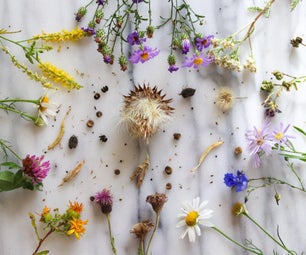Introduction: Make Oriental Paver/Stepping Stones for the Garden
In this instructable, I show how to make unusual decorative pavers or stepping stones with an oriental flair.
Step 1: Materials Needed
1. Form(s) for the stepping stone
2. Cement, mortar, sand, water, usual concrete items.
3. Buckets
4. Trowels, spreaders, etc.
5. Sponges
6. Cans or measuring cups to measure the various ingredients.
7. Styrofoam or EPS foam (To make letters for the name, message).
9. Hotwire machine...Mighty Goliath! (See my instructable: making the mighty goliath).
10. I Use regular white glue or the tacky kind....either works fine.
Step 2: Design the Paver You Want to Make
I use stencils found in any craft store. It's possible to go online, search and find asian flavored lettering as well! For this instructable, I have chosen "Love" as the project, with others shown to supply details.
Step 3: Making Letters
A. Make a stencil in the usual way, i.e., stencil brush, paint, etc.
B. Enlarge the stencil you made on a copier...check to see that it fits your mold.
C. Use a craft knife/scalpel to cut out letters to make a new, larger stencil. Use care in cutting this stencil, as the "cutouts" will be used to make styrofoam letters.
D. Glue (or pin as I have done) cutout pieces to foam blank-let dry...
E. Cutout foam pieces/letters on hotwire machine.
Step 4: Making Form for Cement
I found a plastic container at a thrift shop which is exactly 6" x 8"-the size of many paver stones. This is a good size to use. You can easily make a form with 1" x 2' lumber, and a bottom piece of plywood or other material. This bottom piece is cut to 7.5" x 9.5". (Assuming you use the previous dimensions).
Step 5: Use Stencil in Mold
In the bottom of the mold, use the stencil you cut to place your design (REVERSED!). This will make it easy to line up your oriental "letters" correctly.
Step 6: Glue All Pieces in Place.
Glue the pieces we cut out on the hotwire machine to the bottom of the mold. Use mirror to check alignment, as all pieces are REVERSED! As you look in the mirror, the lettering should appear as it will on the final paver. Let these glued on pieces set over night if possible.
Step 7: Prepare Mold for Pouring
I use a very slight amount of vegetable oil, brushed into the corners of the mold, around the edges and out into the flat parts. If done before gluing on the letters, they won't stick very well, and they might float up into the concrete.
Step 8: Mix the Cement
I use a standard mix of 3 parts sand to 1 part cement. If colorant is chosen, add to the water, and not the dry parts. How much colorant to use? I use about 2 tablespoons to 1 and a half cups of water, more or less. This is not critical. For the dry mixes, I use a regular 14oz. can, and for the oriental stepping stone it takes about 2 cans of mix to complete the pour.
Step 9: Start the Pour
I pour in 1/3 of my mixture, gently move it around all the letters, and then gently bounce the form and mixture up and down to release any trapped air bubbles. Take care at this step, as you don't want to dislodge any letters! Finish pouring the rest of the mixture. Let cure 24-48 hours.
Step 10: Remove From Mold at 48 Hours
The paver/stepping stone should come out very easily. I just turn it upside down, and use thumbs to press on the back of the form. If you have made a wood form, simply unscrew, and the paver should release.
Step 11: Remove Foam Lettering
I like to wait as long as possible: even a week later is best, as concrete keeps on curing for some time after it has set up. "The longer the better."
Step 12: Place Stone in Garden or Place of Your Choosing
These would go good in a zen garden, don't you think? I took a couple of pictures of what that might look like. Or, of course, any place in the garden, the path, walkways, waterfalls, etc. Enjoy! Love, peace and energy! Sounds good to me!
Participated in the
Get in the Garden Contest













